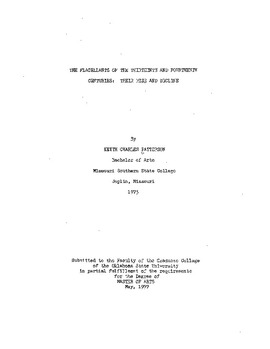| dc.contributor.advisor | Hackett, Neil | |
| dc.contributor.author | Patterson, Keith Charles | |
| dc.date.accessioned | 2015-09-29T15:30:27Z | |
| dc.date.available | 2015-09-29T15:30:27Z | |
| dc.date.issued | 1977-05-01 | |
| dc.identifier.uri | https://hdl.handle.net/11244/19148 | |
| dc.description.abstract | In the year 1260 a mass penitential movement began in the Italian city of Perugia. Thousands of people, known as Flagellants, whipped themselves publicly in a desperate attempt to ward off the judgment of an angry God. Ninety years later, in Germany, the Sect of the Flagellants was revived in an unprecedented thrust of enthusiasm. The thirteenth century penitents were greeted with Church approval and popular veneration. 'Ihe Flagellants of the next century were branded heretics and persecuted out of existence. By examining contemporary social, political and religious conditions, this study evaluates the reasons for the rise and decline of the Flagellant movement. | |
| dc.format | application/pdf | |
| dc.language | en_US | |
| dc.publisher | Oklahoma State University | |
| dc.rights | Copyright is held by the author who has granted the Oklahoma State University Library the non-exclusive right to share this material in its institutional repository. Contact Digital Library Services at lib-dls@okstate.edu or 405-744-9161 for the permission policy on the use, reproduction or distribution of this material. | |
| dc.title | Flagellents of the Thirteenth and Fourteenth Centuries: Their Rise and Decline | |
| dc.type | text | |
| dc.contributor.committeeMember | Bischoff, John Paul | |
| dc.contributor.committeeMember | Jewsbury, George F. | |
| dc.contributor.committeeMember | Spaulding, Robert M. | |
| osu.filename | Thesis-1977-P317f.pdf | |
| osu.accesstype | Open Access | |
| dc.description.department | History | |
| dc.type.genre | Thesis | |
